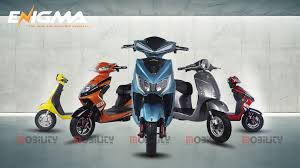
Anmol Bohhre
India’s EV Moment: key trends shaping 2025 (for Enigma EV)
India’s electric-vehicle story accelerated through 2025. Rapid growth in unit sales, sharper policy nudges for manufacturing and charging, a surge in two-wheelers and last-mile electrification and fresh technical innovations combined to reshape market dynamics. The following overview highlighted the biggest trends that buyers, fleet operators, dealers, and investors should track.
1) Market snapshot growth concentrated in two-wheelers
Electric two-wheelers continued to dominate unit volumes, forming the majority of EV registrations in FY24–25. Strong year-on-year gains across e-scooters and e-bikes reflected affordability, lower operating cost and quick payback for urban commuters and delivery fleets. National sales momentum in early 2025 signalled steady demand recovery across urban and peri-urban pockets.
2) Charging infrastructure public networks scaled, but gaps remained
Government and private investment targeted a rapid expansion of public chargers. The PM E-DRIVE scheme and allied measures planned support for tens of thousands of public charging points through 2026, while DISCOM–CPO (charging point operator) partnerships, PPP models and private retail rollouts attempted to plug city-to-city charging gaps. Despite steady additions, charger density for four-wheelers stayed lower than required for fast consumer adoption, keeping home and workplace charging critically important.
3) Battery swapping and standards moved to centre stage
Battery swapping gained fresh policy attention as an answer for rapid turnarounds, especially for two-wheelers and light commercial vehicles used by delivery fleets. Standards bodies and regulators moved to define interoperability and safety requirements in 2025, enabling more scalable swapping networks and reducing dependence on a single vendor’s system. That shift promised faster charges for fleets and lower upfront vehicle prices where swap-as-a-service models matured.
4) Manufacturing push incentives, localisation and new schemes
Policy emphasis on domestic manufacturing intensified. Programs to attract large investments into vehicle and battery cell manufacturing, including minimum investment and domestic value addition targets for electric passenger car projects, aimed to secure supply chains and lower import dependency. OEMs and tier-1 suppliers accelerated plant commitments and announced localisation roadmaps to meet these new eligibility criteria.
5) Technology trends pragmatic innovations, not just hype
Practical advances rose to prominence: motor designs that reduced reliance on heavy rare-earth magnets, incremental improvements in battery management systems, and growing interest in alternative chemistries reduced vulnerability to commodity shocks. Simultaneously, software features OTA updates, telematics for fleet efficiency, and integrated warranty/battery health programs emerged as differentiators in buying decisions.
6) Fleet electrification and last-mile logistics accelerated
Delivery platforms and shared-mobility operators expanded electric fleets to cut operating costs and meet sustainability targets. Battery-as-a-service contracts, flexible financing and operational leases made electric two-wheelers and three-wheelers attractive for gig drivers and fleet managers focused on total cost of ownership rather than upfront price. Fleet demand helped justify dense charger and swap network rollouts in high-use corridors.
7) Retail and customer journeys changed digital + festive sales upticks
Online marketplaces and omnichannel launches combined with finance offers and seasonal promotions to simplify discovery and purchase. Large e-commerce players began listing two-wheelers and associated financing/insurance bundles, improving reach beyond traditional dealerships and helping convert interest into sales during high-traffic shopping windows.
8) Remaining challenges grid, affordability, and resale confidence
Challenges persisted: grid readiness and peak-load management required coordination with DISCOMs; upfront affordability for four-wheelers remained a limiting factor despite lower operating costs; and consumer concerns about battery life and resale values continued to shape purchase hesitancy. Continued government incentives, manufacturer warranties and structured finance schemes emerged as the short-term levers to ease adoption.
What this means for Enigma EV customers
City commuters and delivery fleets should prioritise models with strong after-sales support, battery health guarantees and easy access to chargers or swap stations. Dealers and partners should highlight total cost of ownership and display real-world range and warranty terms transparently. Buyers planning for longer-term ownership ought to watch localisation policies and manufacturer investments improved domestic supply chains tend to shrink post-purchase service risk over time.
Conclusion pragmatic optimism for 2025 and beyond
2025 shaped into a year where policy, infrastructure and market demand aligned more clearly than before. Momentum concentrated around two-wheelers and fleet electrification, while charging, swapping standards and domestic manufacturing policies addressed structural bottlenecks. Continued coordination across government, utilities, OEMs and retail channels promised an expanding and more reliable EV ecosystem, a favourable backdrop for buyers and businesses that selected products and partners with strong service and financing models.




